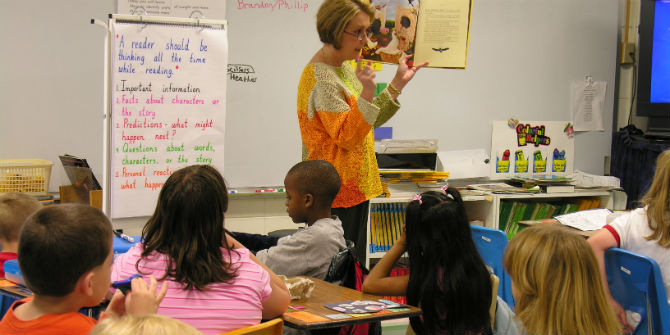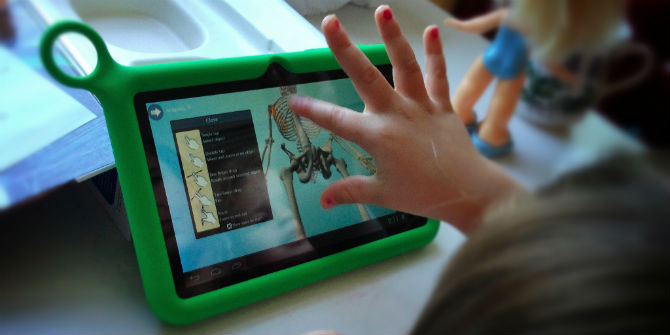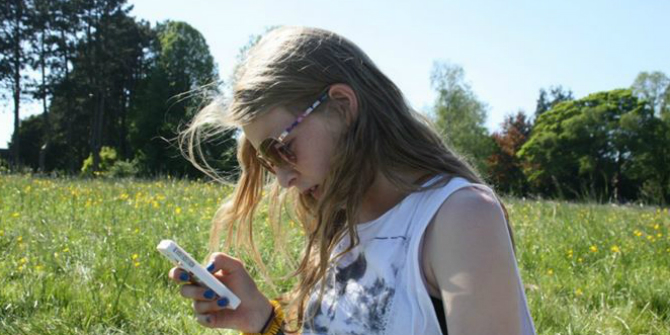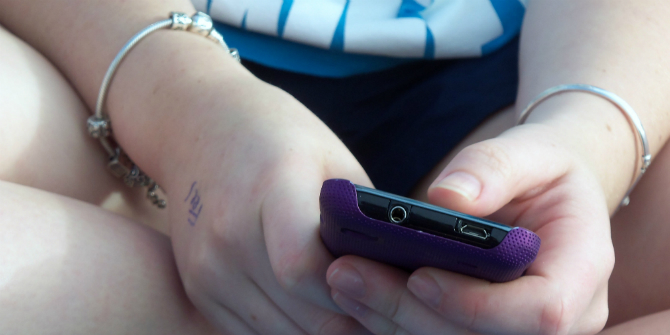 As a parent, even writing this title is uncomfortable. It is unlikely to sit comfortably with parents and carers, community actors such as teachers, social workers and youth workers, or social actors such as Government. Yet, if I were to ask the same groups ‘How do children learn best?’ I imagine most would reply, ‘By doing’. For www.parenting.digital, Simon Hammond discusses his recent research undertaken with colleagues Gianfranco Polizzi and Kimberley Bartholomew on the importance of children’s risky online play for building digital resilience and avoiding harm.
As a parent, even writing this title is uncomfortable. It is unlikely to sit comfortably with parents and carers, community actors such as teachers, social workers and youth workers, or social actors such as Government. Yet, if I were to ask the same groups ‘How do children learn best?’ I imagine most would reply, ‘By doing’. For www.parenting.digital, Simon Hammond discusses his recent research undertaken with colleagues Gianfranco Polizzi and Kimberley Bartholomew on the importance of children’s risky online play for building digital resilience and avoiding harm.
Digital resilience is the ability to learn how to recognise, manage, recover, and even grow following experiencing online risks. Yet until now, digital resilience has been solely thought of as a personality trait – something someone is or is not. This assumption overshadowed evidence that online risks are impacted by the individual child’s digital skills and experiences, as well as how online risks are perceived and discussed in their home, community, and social environments. Hence, very little research has been undertaken on digital resilience from a socio-ecological perspective that looks at the individual child as embedded within their various environments.
This is particularly important for “pre-teens” (8 to 12-year-olds), who are seeking more independence at home, school, within society and, increasingly, online. It is also important for teachers as schools have an increasingly central role in shaping how children learn, play, socialise and thrive online.
A collective endeavour
That’s why my colleagues and I conducted a study, recently published in Education and Information Technologies, aiming to create an in-depth picture of how pre-teens build and show digital resilience and how digital resilience operates across home, community, and societal contexts.
We carried out 10 focus groups across England with 59 children aged 8 to 12 years old. We were assisted by six teenagers aged 16 to 17 years who were invited to act as ‘co-researchers’. Being closer in age and experiences to the pre-teen study participants than the research team, the teenage researchers helped with the data collection and analysis. We also undertook 20 interviews with adults significant for our young participants including parents, carers, and teachers, as well as internet safety experts from across the United Kingdom.
We found that how pre-teens build and show digital resilience in the face of, or following online risks, is contextual. At the individual level, pre-teens could show digital resilience via a combination of their self-efficacy and resources developed from previous experiences. This chimes with recent Pan-European research that seeks to support resilience development by enhancing children’s digital skills. Higher digital skills can help prevent risky online experiences from becoming harmful ones in turn supporting digital resilience development. Though more research is needed to unpick how digital skills and resilience are related to each other.
This work also illustrates that restrictive parental mediation negatively impacts children’s digital skills, which matches our conclusions that pre-teens can also draw on the skills and knowledge from their home environments. For example, it is important to address the concerns of pre-teens that parents might take away their devices as punishment for making mistakes online. Our research found that supportive relationships and open conversations assist pre-teens to activate digital resilience within home environments, enabling growth from online risk experiences in the presence of supportive rather than restrictive parental practices.
We also found that pre-teens’ capability to activate digital resilience at a community level was linked to “social capital” – a term used to describe the value of knowing and being connected to other people. In our work, we found that pre-teens could access formal and informal relationships, meaning we must target not just children or home environments, but the wider ecosystems within which pre-teens interact and are enmeshed. In short, individual, home, or societal-level sources of digital resilience may remain suboptimal when key community actors and networks remain inactive.
At a societal level, a clear message was the belief that ‘intervention’ on a more systemic level would impact individual pre-teens’ digital resilience, their home relationships, communities, and societies as sources of digital resilience, as well as the interactions amongst these levels. The next question is how to do this.
Supporting risky play online
One of the key precursors to digital resilience is the notion that risk must be experienced for adaptations to be made. We do not yet know whether this can be done vicariously, for example through hearing the mishaps of others, or solely through direct experience. One would hope that learning about the mistakes of others is an effective learning technique since it is often central to internet safety education. However, as I suggested at the start, not all learning can be done in a purely theoretical setting. Children need to ‘learn by doing’ as well.
We need to create new ways that promote controlled exposure to risky opportunities. This notion, also known as adventurous play, can provide opportunities for children to learn about provocation, uncertainty, and coping. It is also likely to allow children to test and hone their skills without mistakes being harmful.
Supporting children to learn by doing is, and always has been, a collective endeavour. It is also one which comes with challenges for children, parents, educators, and civil society practitioners. However, these challenges can lead to growth.
We do not yet know if adventurous online play operates on the same premise as ‘offline’, but through a socio-ecological perspective, we will continue to explore, conceptualise, and measure it to help children to benefit from making mistakes online.
First published at www.parenting.digital, this post represents the views of the authors and not the position of the Parenting for a Digital Future blog, nor of the London School of Economics and Political Science.
You are free to republish the text of this article under Creative Commons licence crediting www.parenting.digital and the author of the piece. Please note that images are not included in this blanket licence.
Featured image: photo by Videootit





